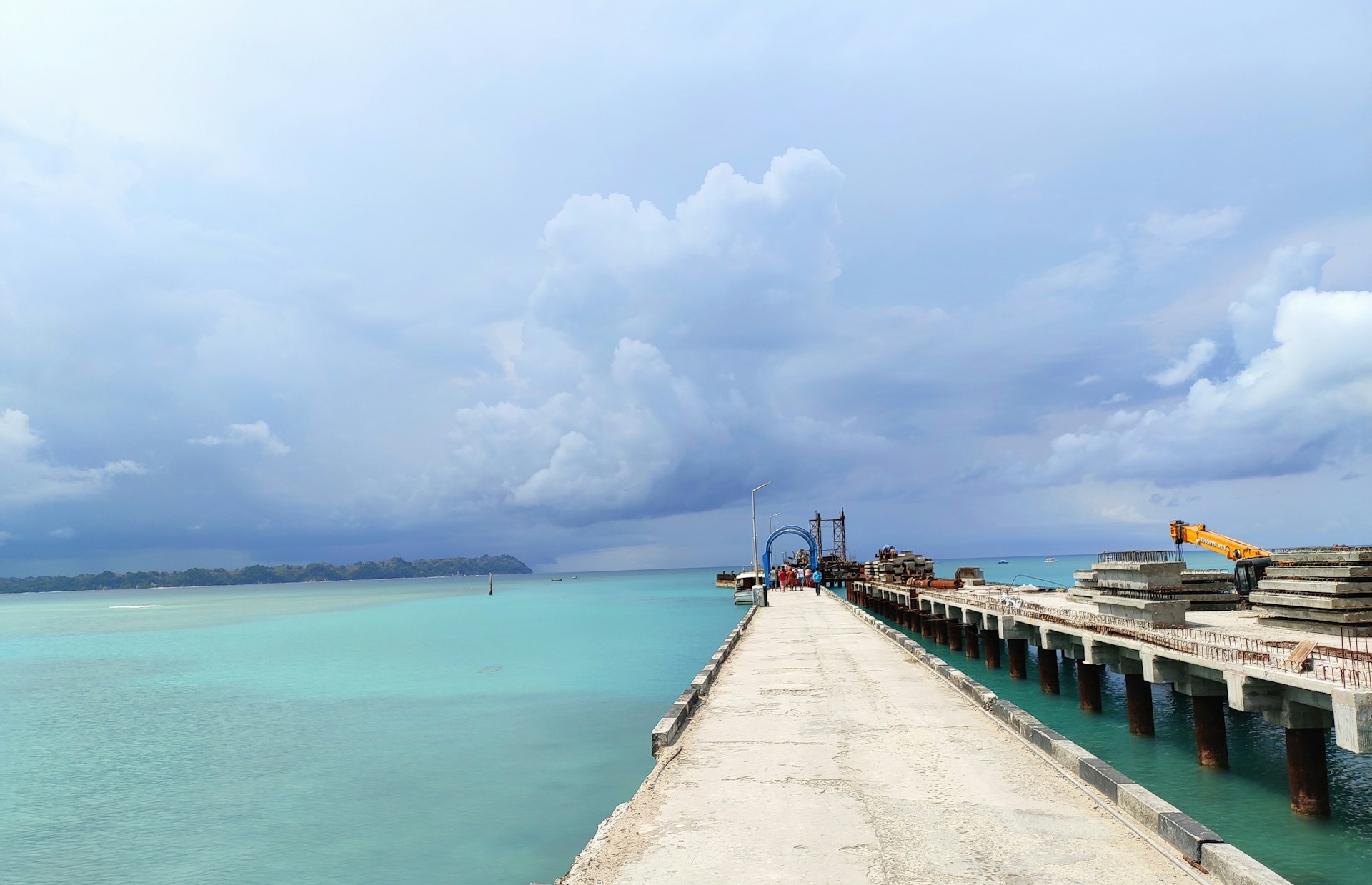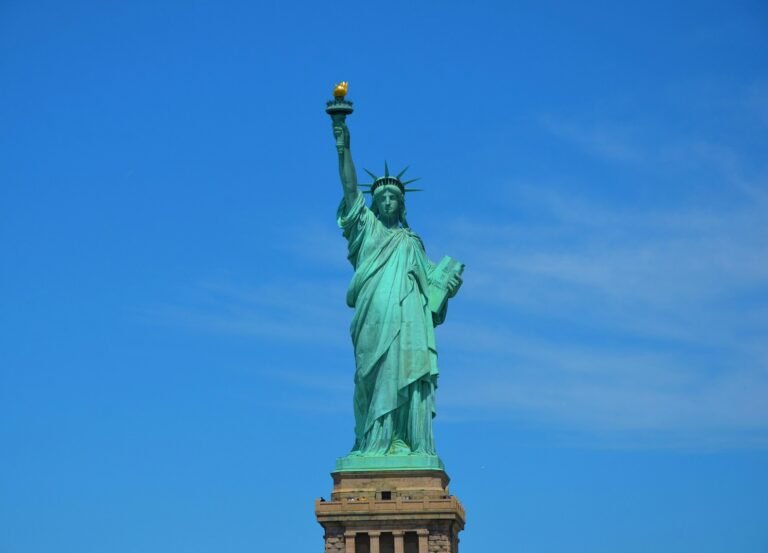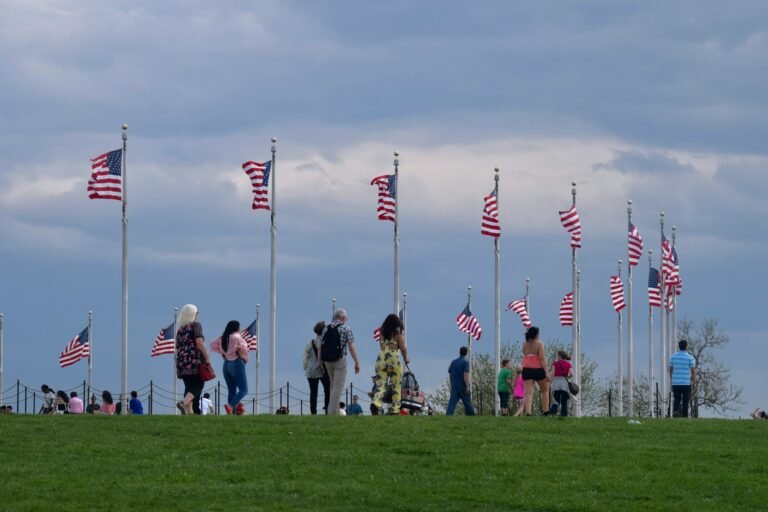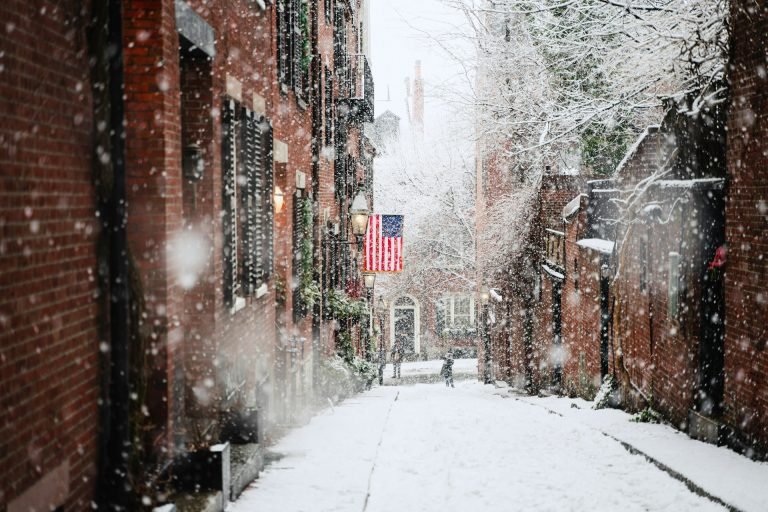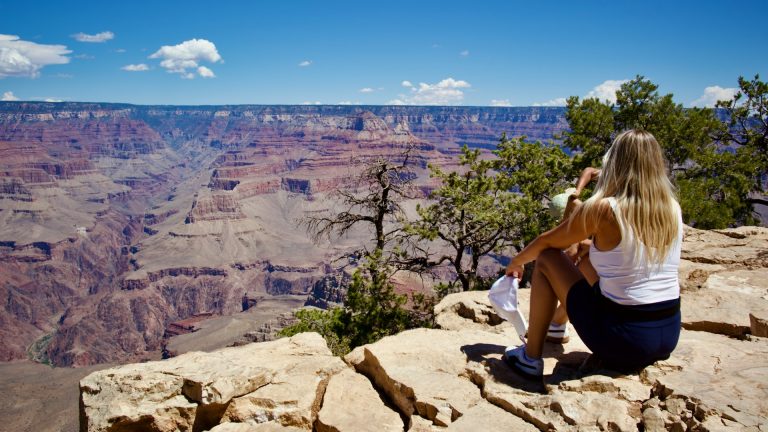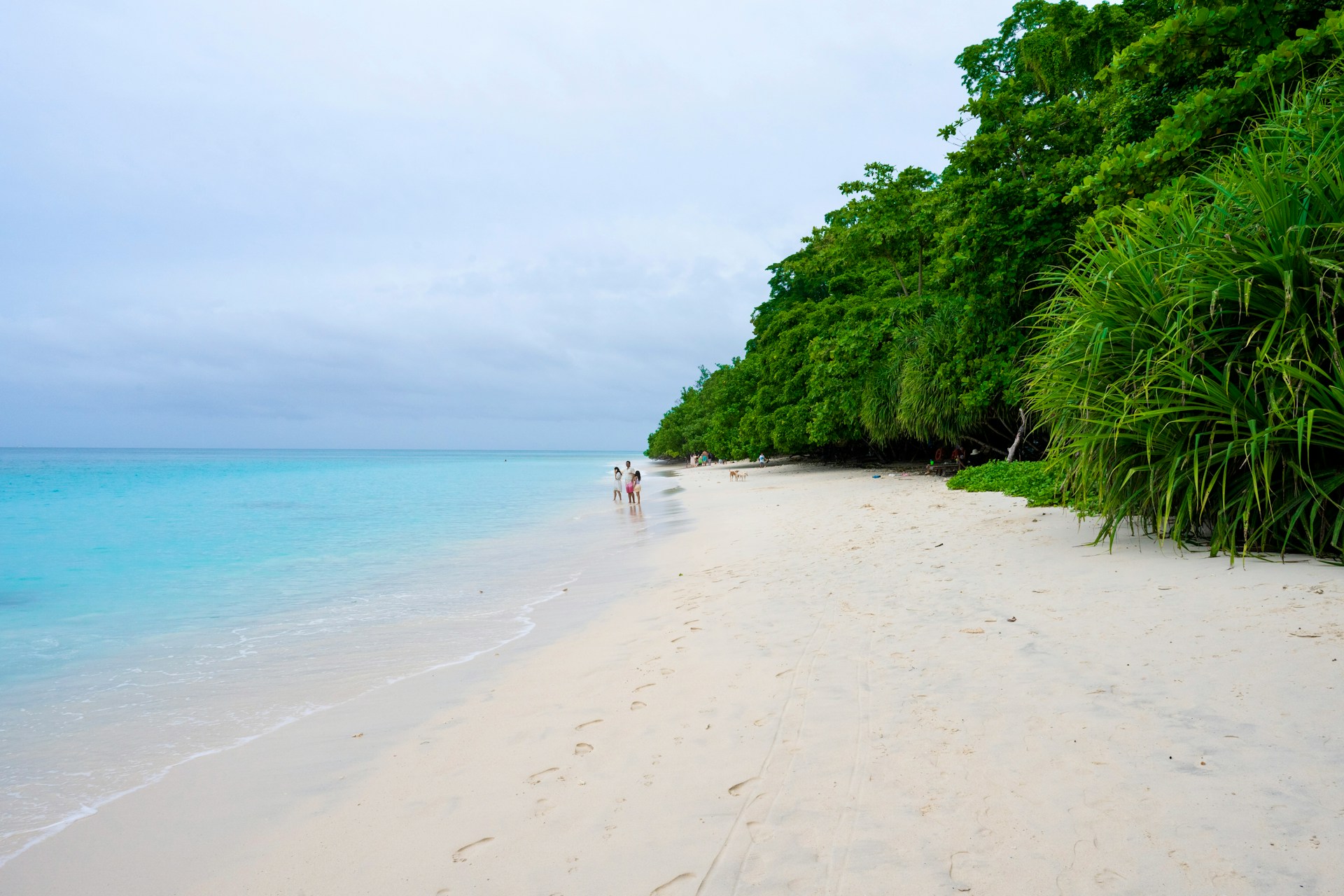
There’s something about discovering a stretch of sand that doesn’t require strategic towel placement or awkward neighbor proximity that makes my soul exhale. Last summer, I found myself on a remote Oregon beach, barefoot with coffee in hand, watching the morning fog lift to reveal not another human soul for miles. Just me, some particularly judgmental seagulls, and the rhythmic therapy of waves breaking against volcanic rock formations.
It wasn’t always this way. For years, I’d been that person—you know the one—squeezing between bronzed bodies on Miami Beach, pretending the experience was somehow relaxing while mentally calculating the square footage of personal space I was entitled to. “This is vacation,” I’d lie to myself, as someone’s portable speaker blasted what I can only describe as music for people who hate music.
The truth? America’s coasts hold secrets. Magnificent, unspoiled stretches where you can hear yourself think and the ocean doesn’t have to compete with a DJ set. Hidden coves where the only footprints in the sand might be your own. Places where “beach day” doesn’t mean “human terrarium experiment.”
So grab your sunscreen (the reef-safe kind, please), a good book, and perhaps a sense of adventure—we’re about to explore America’s most gloriously underpopulated shores.
What Makes a Beach Truly “Secluded”?
Before diving into our sandy sanctuaries, let’s establish what “secluded” actually means in a country of 330 million people increasingly armed with Instagram geotags.
True seclusion isn’t just about visitor numbers—though that’s certainly part of it. It’s about accessibility (the harder to reach, the fewer the flip-flops), visibility (beaches hidden from main roads tend to stay quieter), and amenities (or blissful lack thereof). The moment someone installs a frozen margarita machine, you can kiss true solitude goodbye.
I judge beach seclusion on what I call the “Towel Radius”—how far can you extend your arms without hitting another sunbather? Fifty feet? Excellent. Half a mile? Now we’re talking paradise.
The Atlantic’s Hidden Gems
Cumberland Island, Georgia
Georgia isn’t typically the first state that comes to mind for beach seekers, which is precisely what makes Cumberland Island such a find. Accessible only by ferry and limited to 300 visitors daily, this 18-mile barrier island offers a masterclass in coastal solitude.
Wild horses roam freely here—descendants of domestic horses abandoned centuries ago. There’s something profoundly humbling about sharing a beach with these creatures, watching them gallop through shallow surf while you contemplate how few places like this remain in the modern world.
“I came here expecting pretty beaches,” a fellow traveler told me while waiting for the return ferry. “I didn’t expect to have a spiritual experience watching horses living their best untamed lives against a sunset backdrop.”
The logistics require planning: ferry reservations, potential camping permits if you’re staying overnight, and enough supplies since there are no concession stands or convenience stores. But that’s the price of admission to one of America’s least disturbed coastal ecosystems.
Sandbridge Beach, Virginia
Often called “the Outer Banks of Virginia,” Sandbridge sits just 15 miles south of Virginia Beach’s boardwalk chaos but feels worlds away. Five miles of residential beaches without high-rises or commercial development create an atmosphere more akin to a small beach town from decades past.
I visited on a Tuesday in May—perfect timing as I later learned—and set up my beach chair within view of exactly four other humans, all of whom seemed equally committed to pretending the others didn’t exist. The silence was so complete I could hear the sand crabs scratching about their business.
What Sandbridge lacks in amenities, it makes up for in tranquility. There’s a single market for necessities, a couple of restaurants, and precious little else—which is precisely its charm in a world of overdeveloped beachfronts.
Pacific Treasures
Lost Coast, California
California’s Lost Coast isn’t just named for its remote location—it earned the title by being so ruggedly inaccessible that highway builders simply gave up and routed Route 1 inland, effectively erasing 80 miles of coastline from easy public access.
This isn’t a beach for casual day-trippers. The Lost Coast Trail requires permits, tide charts (sections become impassable at high tide), and legitimate backpacking skills. But those who make the effort are rewarded with the kind of coastal wilderness experience that feels increasingly endangered in our hyperconnected world.
“I’ve never felt smaller or more insignificant than watching 20-foot waves crash onto black sand beaches with mountains rising dramatically behind me and not another human being in sight,” my hiking partner remarked halfway through our three-day trek. “And I mean that in the best possible way.”
The beaches here aren’t for swimming—powerful currents, frigid water temperatures, and dangerous shore breaks see to that. They’re for contemplation, for remembering that nature doesn’t need us nearly as much as we need it.
Second Beach, Olympic National Park, Washington
Olympic National Park houses several contenders for America’s most beautiful beaches, but Second Beach hits the sweet spot between accessibility and seclusion. A relatively easy 0.7-mile forest trail leads to a driftwood-strewn shore where massive sea stacks rise from the Pacific like ancient monuments.
What keeps Second Beach from overcrowding is the combined factors of Olympic Peninsula’s notorious rainfall (pack accordingly) and its distance from major population centers. The extra effort filters out the casual crowds, leaving behind visitors who appreciate the primeval beauty of a coastline that looks largely as it did centuries ago.
I arrived at low tide and spent hours exploring tidal pools teeming with starfish, anemones, and tiny crabs—nature’s most perfect meditation. As the fog rolled in late afternoon, the sea stacks transformed into ghostly silhouettes, creating the distinct feeling of standing at the edge of the world.
Island Escapes
Kalalau Beach, Kauai, Hawaii
If you’re seeking the ultimate secluded beach experience and are willing to work for it, Kalalau awaits at the end of Kauai’s legendary 11-mile Napali Coast trail. This isn’t for the faint-hearted—the trail features narrow paths with thousand-foot dropoffs that have sent many hikers back to their rental cars in defeat.
Those who persevere find themselves on a crescent of golden sand backed by towering green cliffs with waterfalls streaming down their faces. The beach is accessible only by the trail or by boat (weather permitting), and overnight visitors need permits that book out months in advance.
During my visit—a grueling two-day hike that left my legs questioning our friendship—I encountered fewer than 20 other souls spread across the expansive beach. We nodded acknowledgment but maintained respectful distance, each of us having earned our private communion with one of America’s most dramatically beautiful shores.
Dry Tortugas National Park, Florida
Seventy miles west of Key West lies a cluster of seven small islands collectively known as Dry Tortugas National Park. The remoteness alone keeps crowds minimal, but the limited transportation options—either a daily ferry with capped passenger numbers or seaplane for those with deeper pockets—ensures this remains among Florida’s least visited national parks.
The main island houses historic Fort Jefferson, but it’s the surrounding beaches that capture the imagination. Crystalline waters in shades of blue that defy adequate description lap against white sand beaches rarely occupied by more than a handful of visitors.
Snorkeling here reveals an underwater world remarkably intact compared to more accessible reefs. During my afternoon exploring the waters off Loggerhead Key, I shared the experience with exactly zero other snorkelers and a decidedly unbothered nurse shark.
Desert Coast Surprises
Padre Island National Seashore, Texas
Texas might not top many beach destination lists, but Padre Island National Seashore—the longest undeveloped barrier island in the world—deserves serious consideration from solitude seekers. The park protects 70 miles of coastline, including dunes, prairies, and tidal flats.
While the northern sections see day-trippers from nearby cities, drive far enough south (four-wheel drive recommended) and the modern world begins to fall away. At mile marker 20, I realized I hadn’t seen another vehicle in over an hour. By mile 30, I felt like the last person on Earth—in the most delightful way possible.
During summer months, lucky visitors might witness sea turtle hatchling releases. I missed this by days but found compensation in the form of a beach campsite where the only light pollution came from an impossibly dense field of stars overhead.
Enderts Beach, California
Tucked away within Redwood National and State Parks, Enderts Beach rewards those willing to hike a mile downhill with a pristine shoreline where redwood forests practically meet the Pacific. The trail’s moderate difficulty—especially considering the uphill return journey—keeps visitor numbers low even during peak summer months.
The juxtaposition of ancient trees and crashing surf creates an almost primeval atmosphere. I spent an afternoon here watching gray whales spout offshore while sitting on a driftwood log that might have been a thousand-year-old redwood in its previous life.
When to Visit for Maximum Seclusion
Timing is everything when seeking beach solitude. As a general rule:
- Shoulder seasons (April-May and September-October) offer the perfect balance of decent weather and minimal crowds
- Weekdays see dramatically fewer visitors than weekends at all but the most remote locations
- Early mornings often provide temporary solitude even on otherwise popular beaches
- Adverse weather forecasts (overcast days, light rain) will scare away fair-weather beachgoers while often delivering hauntingly beautiful coastal experiences
I’ve found some of my most meaningful beach experiences during light drizzle or morning fog—conditions that transform familiar landscapes into mysterious realms and keep the sunburn-and-selfie crowd at bay.
Responsible Seclusion
Finding solitude comes with responsibility. These places remain special precisely because visitors treat them with appropriate reverence:
- Pack out everything you bring in—and perhaps some trash left by less considerate visitors
- Respect wildlife by maintaining distance and never feeding animals
- Stay on designated trails to prevent erosion and habitat damage
- Research local regulations regarding camping, fires, and protected areas
- Consider whether geotagging your find on social media might contribute to future overcrowding
The unspoken code among those who seek true beach seclusion often includes a gentle gatekeeping—not to be elitist, but to protect these increasingly rare spaces from the loving-them-to-death syndrome that has transformed so many once-special places.
Essential Gear for Secluded Beach Adventures
Venturing to remote shores requires more preparation than your standard beach day. My essentials include:
- Water filtration system for longer stays (I use a Grayl Geopress)
- High-clearance tent for beaches with unexpected tide patterns
- Solar charger for devices when electrical outlets are distant memories
- Proper first aid kit including treatments for marine hazards common to your destination
- Physical map because cellular service is gloriously unreliable at truly secluded beaches
- Tide tables downloaded or printed beforehand—critical for safety at many remote beaches
The extra weight in your pack is a small price for the privilege of experiencing beaches as they were meant to be experienced—wild, peaceful, and gloriously underpopulated.
Finding Your Perfect Secluded Beach
Personal preference plays a huge role in defining beach perfection. Some questions to consider when searching for your ideal secluded shore:
- Do you need swimmable waters, or is scenic beauty sufficient?
- How far are you willing to hike, drive, or boat to reach seclusion?
- Are you seeking day trips or overnight experiences?
- What level of amenities (bathrooms, freshwater) represents your minimum comfort threshold?
- What type of environment speaks to you—tropical, temperate, or rugged?
I’ve found that being honest about these preferences prevents the disappointment of arriving at a theoretically perfect beach that doesn’t match your personal paradise parameters.
Conclusion: The Value of Coastal Solitude
In a world increasingly defined by connectivity and constant stimulation, finding a patch of empty shoreline feels almost rebellious. These secluded beaches offer something increasingly precious—space to hear ourselves think, to remember our scale in relation to the natural world, to experience the coast as our ancestors did, without the background noise of modern life.
“The sea does not reward those who are too anxious, too greedy, or too impatient,” writes Anne Morrow Lindbergh in her coastal meditation “Gift from the Sea.” The same might be said for finding truly secluded beaches. They require effort, research, flexibility, and often a willingness to abandon comfort for experience.
But when you’re sitting alone watching the sun sink into an empty horizon, feet buried in sand that bears no footprints but your own, the rewards become immediately, viscerally apparent. These moments of coastal solitude aren’t just enjoyable—they’re necessary recalibrations for the soul.
The next time someone asks why you’d drive an extra three hours or hike five miles when perfectly good developed beaches exist closer to home, you might struggle to articulate an answer that makes sense to them. That’s okay. Some experiences defy easy explanation—which is precisely what makes them worth seeking.
Frequently Asked Questions
Q: What defines a “secluded” beach in the United States? A: Truly secluded beaches typically feature limited access points, distance from major population centers, lack of commercial development, and significantly fewer visitors than popular beaches. They often require extra effort to reach through hiking, four-wheel driving, or boat transportation.
Q: When is the best time to visit secluded beaches for maximum privacy? A: For optimal seclusion, visit during weekdays in shoulder seasons (April-May or September-October). Early mornings generally offer the most solitude regardless of season. Light rain or overcast conditions often drive away crowds while providing uniquely atmospheric experiences.
Q: Are secluded beaches safe for swimming? A: Safety varies dramatically by location. Many secluded beaches lack lifeguards and may have dangerous currents, unexpected tide patterns, or other hazards. Always research specific conditions, check tide tables, and assess your swimming abilities honestly before entering remote waters.
Q: Do I need permits to visit these secluded beaches? A: Some secluded beaches, particularly those in national parks or protected areas, require permits for day use or overnight stays. For example, Cumberland Island limits daily visitors, and Kalalau Beach requires overnight permits that book out months in advance. Always check official websites before planning your trip.
Q: What essential items should I pack for a secluded beach visit? A: Beyond standard beach gear, bring ample water (or water filtration), extra food, sun protection, first aid supplies, tide charts, insect repellent, and navigation tools. Cell service is often unreliable, so download offline maps. For remote beaches, consider emergency communication devices like a satellite messenger.
Q: Can I camp on these secluded beaches? A: Camping regulations vary widely. Some beaches allow dispersed camping, others have designated campsites requiring reservations, and many prohibit overnight stays entirely. Research specific rules for your destination and obtain necessary permits well in advance.
Q: How do I find secluded beaches not mentioned in popular guides? A: Explore satellite imagery for undeveloped coastlines, consult local hiking groups, speak with park rangers, or search for beaches described as “primitive” or “undeveloped” in official park documentation. Sometimes simply driving coastal roads and looking for unmarked access points can lead to discoveries.
Q: What wildlife might I encounter on secluded U.S. beaches? A: Wildlife varies by region but might include shorebirds, sea turtles (and nests), various marine mammals, wild horses (on specific islands), crabs, and occasionally larger predators like alligators (Gulf Coast) or bears (Pacific Northwest). Maintain safe distances and never feed wildlife.
Q: Are dogs allowed on secluded beaches? A: Pet policies vary significantly. Many protected beaches prohibit dogs entirely to protect wildlife and nesting areas, while others allow leashed pets during certain seasons. Always check regulations before bringing pets to remote beaches.
Q: How can I practice responsible tourism at secluded beaches? A: Follow Leave No Trace principles by packing out all trash, staying on designated trails, respecting wildlife, avoiding damage to plants or dunes, and considering the impact of social media sharing on fragile locations. Be prepared for self-sufficiency rather than expecting amenities.
Top Secluded Beach Resources & Equipment
- NPS Wilderness Beach Permits – https://www.nps.gov/subjects/camping/wilderness-camping.htm – Essential reservation system for many national park beach camping experiences.
- Cumberland Island Ferry – https://www.nps.gov/cuis/planyourvisit/ferry.htm – The only public transportation to Georgia’s wildest barrier island.
- Tide Charts Mobile App – https://www.tideschart.com – Critical safety tool for beaches with dangerous tide patterns or areas that become inaccessible at high tide.
- America the Beautiful Pass – https://www.nps.gov/planyourvisit/passes.htm – Annual access to federal recreation sites including many secluded national seashores.
- Garmin inReach Mini – https://www.garmin.com – Satellite communicator for emergency situations in areas without cell service.
- Grayl GeoPress Water Purifier – https://grayl.com – Portable filtration system for extended stays at beaches without fresh water access.
- National Geographic Trails Illustrated Maps – https://www.natgeomaps.com – Detailed waterproof maps for coastal hiking trails.
- REI Co-op Flexlite Beach Chair – https://www.rei.com – Lightweight, packable seating for beaches requiring hikes to access.
- Hyperlite Mountain Gear Dyneema Tarp – https://www.hyperlitemountaingear.com – Ultralight shelter for weather protection during extended beach stays.
- Dry Tortugas National Park Ferry – https://www.drytortugas.com – Transportation to one of America’s most remote and spectacular beach destinations.
- California Coastal Trail Map – https://www.californiacoastaltrail.org – Guide to accessing hidden beaches along California’s extensive coastline.
- Olympic Coast Tide Pool Guide – https://www.nps.gov/olym/planyourvisit/exploring-olympic-coast-tidepools.htm – Educational resource for Pacific Northwest beach exploration.
- Kalalau Trail Permits – https://dlnr.hawaii.gov/dsp/hiking/kauai/kalalau-trail/ – Required reservations for Kauai’s legendary coastal trail to secluded Kalalau Beach.
- Weather-resistant Binoculars – https://www.nikon.com – For wildlife viewing and distant ship spotting from remote shores.
- Padre Island Four-Wheel-Drive Map – https://www.nps.gov/pais/planyourvisit/driving-the-beach.htm – Essential guide for navigating Texas’s longest undeveloped beach.

